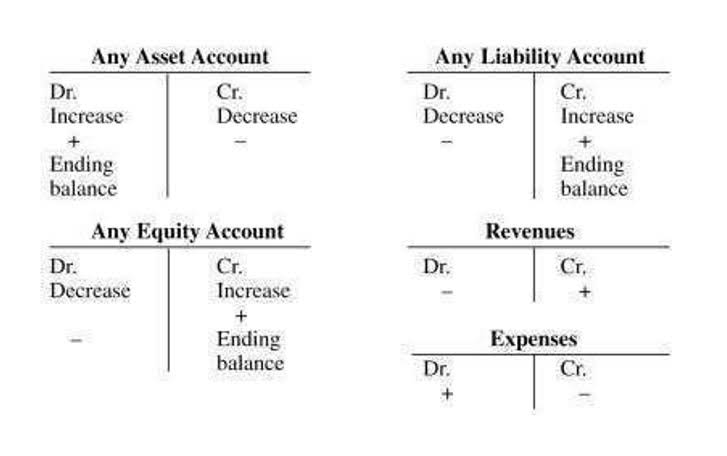
Net realizable value (NRV) in accounting is the estimated selling price of an asset in the ordinary course of business, minus any costs to complete and sell the asset. NRV provides a conservative estimate of an asset’s value, ensuring financial statements reflect realistic asset valuations. However, at the end of the accounting year the inventory can be sold for only $14,000 after it spends $2,000 for packaging, sales commissions, and shipping. Therefore, the net realizable value of the inventory is $12,000 (selling price of $14,000 minus $2,000 of costs to dispose of the goods). In that situation the inventory must be reported at the lower of 1) the cost of $15,000, or 2) the NRV of $12,000. In this situation, the inventory should be reported on the balance sheet at $12,000, and the income statement should report a loss of $3,000 due to the write-down of inventory.
- By applying NRV calculations, companies can ensure their financial statements reflect a more accurate and realistic financial position.
- While market value can provide a snapshot of potential economic benefits, NRV offers a more cautious approach to asset valuation.
- Another example is trade receivable, which includes sundry debtors, bills receivables and other notes receivable.
- The application of LCNRV is particularly significant in industries where inventory can become obsolete or where market prices are highly volatile.
- NRV represents the expected selling price of inventory minus any additional costs needed to make the sale, such as the cost of goods sold and selling expenses.
- The NRV is used in inventory accounting to estimate the proceeds of a sale or how much the selling price exceeds the costs incurred in the sale of an asset.
NRV in Manufacturing

It is essential to remember that we are performing our analysis as of 31 December 2020. As our sales team offers discounts for various reasons, we also calculate the Net Sales for each item. Whenever we assess a need to book a write-down, the next step is to recognize it as an expense item in our profit and loss (Income Statement) and decrease the inventory value in our Balance sheet. IFRS requires applying the same assumptions and formula for the NRV calculation of similar items, while net realizable value US GAAP has no such stipulation. This means that profits should not be overstated and expenses or losses should be recorded.
Example of Net Realizable Value
There is an ongoing need to examine the value of inventory to see if its recorded cost should be reduced, due to the negative impacts of such factors as damage, spoilage, obsolescence, and reduced demand from customers. Further, writing down inventory prevents a business from carrying forward any losses for recognition in a future period. Thus, the use of net realizable value is a way to enforce the conservative recordation of inventory asset values. Wholesale businesses rely on NRV to set prices and assess inventory value for financial reporting. Retail businesses must calculate NRV to ensure they don’t overstate the value of their inventory.
- These can be found under the current assets section of corporate balance sheets.
- Understanding the key differences between Market Value and Net Realizable Value (NRV) is crucial for businesses, investors, and financial analysts as they provide distinct perspectives on the value of assets.
- For instance, if a company owns a piece of rare art, the fair value might be determined through an appraisal process since there may not be an active market for that asset.
- It usually requires certified public accountants (CPAs) to do the job as it involves a lot of judgment.
- Businesses need to evaluate the impact on their financial statements and choose the method that best reflects their financial position and performance.
Net realizable value formula

This divergence can lead to significant differences in financial reporting, particularly for multinational corporations that operate under both sets of standards. Understanding these nuances is crucial for stakeholders who rely on financial statements for decision-making, as it affects the comparability and reliability of the reported financial information. Catch Up Bookkeeping Several factors significantly impact a company’s net realizable value, including collectability, economic conditions, obsolescence, and market demand.
- It’s a dynamic figure that requires constant monitoring and analysis to make informed decisions.
- Conversely, the Last-In, First-Out (LIFO) method assumes that the most recently acquired items are sold first.
- Net Realizable Value is the value at which the asset can be sold in the market by the company after subtracting the estimated cost which the company could incur for selling the said asset in the market.
- If the auditors identify significant NRV issues, the company will either have to adjust their records or accept a qualified audit report.
- An alternative is to separate our inventory into groups of similar items and calculate the Net Realizable Value on an aggregated basis.
- As a result of our analysis, we would write down the cost of Rel 5 HQ Speakers, highlighted below in yellow, by $6,000 so the new cost on our books is $50 each.
In contrast, companies using last-in, first-out (LIFO) or retail inventory methods apply a different standard called the “lower of cost or market” rule. If market conditions cause inventory value to fall below its original cost, this rule forces the company to recognize that loss immediately, ensuring the balance sheet reflects a realistic recovery value. Net realizable value (NRV) is the estimated sale price for an asset after deducting any selling costs.
- On the other hand, net realizable value is the estimated selling price in the ordinary course of business, minus any costs of completion, disposal, and transportation.
- This entry formally recognizes the economic loss that has occurred due to the decline in the inventory’s value.
- This means that inventories should be written down to below their original cost in situations where they’re damaged, become obsolete or if their selling prices have fallen (IAS 2.28).
- This can lead to situations where the Fair Value of an asset is significantly different from its Net Realizable Value.
Allocating costs in joint production processes
GAAP, the figure that is presented on a balance sheet for accounts receivable is its net realizable value—the amount of cash the company estimates will be collected over time from these accounts. From an investor’s perspective, market value is essential as it helps them determine the right time to buy or sell an asset. For businesses, understanding market value can accounting influence strategic decisions such as mergers and acquisitions, stock issuance, and investment in new projects. It also plays a pivotal role in taxation and insurance, where the assessed market value of property and assets can significantly impact the premiums and taxes payable. As we now have both the average cost and average sales price, we can compare those to identify potential NRV issues.

NRV is often used to assess the value of inventory that may be sold below cost due to damage, obsolescence, or other issues. Walmart, one of the world’s largest retail companies, uses the Lower of Cost or Market (LCM) method to value its vast inventory. Due to the nature of retail, where inventory includes a wide range of products with varying lifespans and market values, LCM is particularly effective. It provides guidelines for various aspects of financial reporting, including inventory valuation. Under GAAP, the Lower of Cost or Market (LCM) rule is predominantly used to value inventory. GAAP emphasizes conservatism, ensuring that assets are not overstated and potential losses are recognized promptly.
